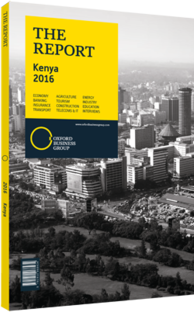Henry Rotich, Cabinet Secretary, National Treasury: Interview

Interview: Henry Rotich
What measures can be taken to broaden Kenya’s tax base without having an adverse effect on the country’s overall attractiveness to investors?
HENRY ROTICH: In 2013 we modernised and rationalised our legislation on value-added tax to remove as many exemptions and loopholes from the tax code as possible. The list of exemptions has been reduced from about 430 items to 40, with a notable effect in terms of increasing revenues. At the same time, to maintain the attractiveness of some strategic sectors such as energy and infrastructure, we have introduced new selective exemptions within the scope of these areas. We are now in the process of reviewing income tax regulations, which we hope to redesign, rationalise and introduce within the next six months.
Moreover, we have worked to streamline the process of tax payment and collection to increase levels of tax compliance. As part of these efforts, we have introduced the National Electronic Single Window System at the country’s ports of entry, which will also help to boost trade within the East African region.
To what extent can the state achieve savings by implementing the new e-procurement system?
ROTICH: The move to e-procurement is part of a broader push towards e-government in Kenya. On the revenue side, we have worked to digitise many of the payments that the government collects from its citizens, particularly through the e-citizen platform. What remains to be done is to bring digital infrastructure completely online, as well as to boost the efficiency with which government ministries and agencies can process such payments.
The national government has already introduced its e-procurement systems. We have conducted workshops to educate government employees and citizens on the new process. The next step will be to work with the county governments to introduce e-procurement at this level too, and to move the entire procurement process on-line at all levels. While it is difficult to quantify the cost-effectiveness of the new system, we are confident that given the challenges faced in the past – especially relating to transparency – the investment will ultimately pay off.
What can be done to increase levels of foreign direct investment into Kenya?
ROTICH: The most important thing is to ensure that Kenya’s business environment is as friendly as possible by removing red tape and obstacles to investment. Most notably, we have invested significantly in energy: the cost of power has come down by around 30% over the past year. Kenya is also working to substantially boost capacity and to improve the transmission and distribution system. Improvements have also been made to transport infrastructure, particularly in seaports, airports, and the road and rail networks. This is critical for investors, as these projects should bring down transport costs while improving market access. Finally, Kenya is working to address perceptions of security problems to ensure that it remains favoured by international investors.
Which sectors are being prioritised for public-private partnerships (PPPs) in the coming years?
ROTICH: The government’s PPP unit has operated as a solid foundation for engagement between the public and private sectors, and is now working to increase the pipeline of bankable projects. Kenya’s PPP programme, which includes new infrastructure, as well as expansion of existing assets, covers projects in power generation, roads and bridges, ports, airports, railways, water supply, treatment and distribution systems, solid waste management, and social infrastructure. Many projects have already taken off, such as the agreement between Kenyatta University and Africa Integras to build housing for 10,000 students.
You have reached the limit of premium articles you can view for free.
Choose from the options below to purchase print or digital editions of our Reports. You can also purchase a website subscription giving you unlimited access to all of our Reports online for 12 months.
If you have already purchased this Report or have a website subscription, please login to continue.

